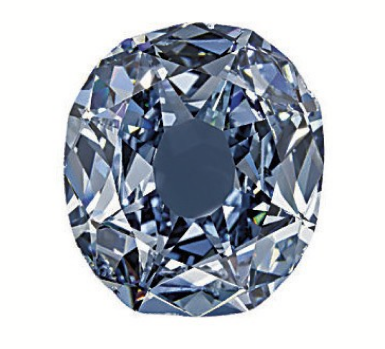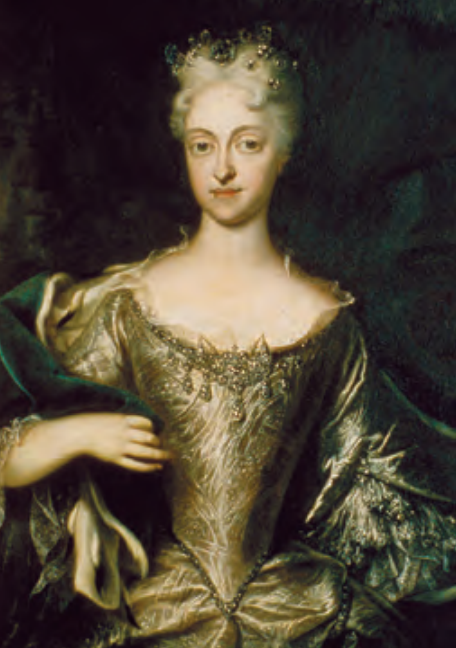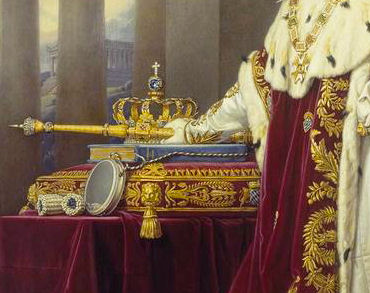Wittelsbach Diamond on:
[Wikipedia]
[Google]
[Amazon]
The Wittelsbach-Graff Diamond is a deep-blue diamond with internally flawless clarity, originating in the
 The original Wittelsbach Diamond, also known as Der Blaue Wittelsbacher, was a fancy, deep, greyish-blue diamond with VS2 clarity that had been part of both the
The original Wittelsbach Diamond, also known as Der Blaue Wittelsbacher, was a fancy, deep, greyish-blue diamond with VS2 clarity that had been part of both the

 The diamond originates from the
The diamond originates from the
Kollur Mine
Kollur Mine was a series of gravel-clay pits on the south bank of the Krishna River in the Golconda Sultanate of India. It currently falls within the state of Andhra Pradesh. It is thought to have produced many large diamonds, known as Golcond ...
, India
India, officially the Republic of India (Hindi: ), is a country in South Asia. It is the seventh-largest country by area, the second-most populous country, and the most populous democracy in the world. Bounded by the Indian Ocean on the so ...
. Laurence Graff purchased the Wittelsbach Diamond in 2008 for £16.4 million. In 2010, Graff revealed he had had the diamond cut by three diamond cutters to remove flaws. The diamond was now more than lighter and was renamed the Wittelsbach-Graff Diamond. There is controversy, as critics claim the recutting has so altered the diamond as to make it unrecognisable, compromising its historical integrity.
Wittelsbach Diamond
 The original Wittelsbach Diamond, also known as Der Blaue Wittelsbacher, was a fancy, deep, greyish-blue diamond with VS2 clarity that had been part of both the
The original Wittelsbach Diamond, also known as Der Blaue Wittelsbacher, was a fancy, deep, greyish-blue diamond with VS2 clarity that had been part of both the Austrian
Austrian may refer to:
* Austrians, someone from Austria or of Austrian descent
** Someone who is considered an Austrian citizen, see Austrian nationality law
* Austrian German dialect
* Something associated with the country Austria, for example: ...
and the Bavarian Crown jewels.
Its colour and clarity had been compared to the Hope Diamond
The Hope Diamond is a diamond originally extracted in the 17th century from the Kollur Mine in Guntur, India. It is blue in color due to trace amounts of boron. Its exceptional size has revealed new information about the formation of diamonds. ...
. The diamond had measured in diameter and in depth. It had 82 facets arranged in an atypical pattern. The star facets on the crown were vertically split, and the pavilion had sixteen needle-like facets arranged in pairs, pointing outward from the culet
{{inline, date=November 2022
In gemology, a culet is a flat face on the bottom of a gemstone.
During the 14th century, after the adoption of the table cut, a further facet was added to the bottom of the cut parallel to the surface of the tabl ...
facet.
History

 The diamond originates from the
The diamond originates from the Kollur mine
Kollur Mine was a series of gravel-clay pits on the south bank of the Krishna River in the Golconda Sultanate of India. It currently falls within the state of Andhra Pradesh. It is thought to have produced many large diamonds, known as Golcond ...
s of Guntur District
Guntur district is one of the twenty six districts in the Coastal Andhra region of the Indian state of Andhra Pradesh. The administrative seat of the district is located at Guntur, the largest city of the district in terms of area and with a pop ...
in Andhra Pradesh
Andhra Pradesh (, abbr. AP) is a state in the south-eastern coastal region of India. It is the seventh-largest state by area covering an area of and tenth-most populous state with 49,386,799 inhabitants. It is bordered by Telangana to the ...
, India
India, officially the Republic of India (Hindi: ), is a country in South Asia. It is the seventh-largest country by area, the second-most populous country, and the most populous democracy in the world. Bounded by the Indian Ocean on the so ...
. The story that King Felipe IV of Castile purchased the jewel and included it in the dowry of his teenage daughter, Margaret Teresa, in 1664 is apocryphal. The first time the diamond was mentioned is about fifty years later when it was already in Vienna
en, Viennese
, iso_code = AT-9
, registration_plate = W
, postal_code_type = Postal code
, postal_code =
, timezone = CET
, utc_offset = +1
, timezone_DST ...
. It was in the possession of the Habsburg family and came to Munich
Munich ( ; german: München ; bar, Minga ) is the capital and most populous city of the States of Germany, German state of Bavaria. With a population of 1,558,395 inhabitants as of 31 July 2020, it is the List of cities in Germany by popu ...
when, in 1722, Maria Amalia married Karl of Bavaria, a member of the Wittelsbach family.
In 1745, the Wittelsbach Diamond was first mounted on the Bavarian Elector's Order of the Golden Fleece
The Distinguished Order of the Golden Fleece ( es, Insigne Orden del Toisón de Oro, german: Orden vom Goldenen Vlies) is a Catholic order of chivalry founded in Bruges by Philip the Good, Duke of Burgundy, in 1430, to celebrate his marriage ...
. When Maximilian IV Joseph von Wittelsbach became the first King of Bavaria in 1806, he commissioned a royal crown that prominently displayed the diamond. Until 1918, the jewel remained on top of the Bavarian crown. It was seen last in public at Ludwig III of Bavaria
Ludwig III (Ludwig Luitpold Josef Maria Aloys Alfried; 7 January 1845 – 18 October 1921) was the last King of Bavaria, reigning from 1913 to 1918. Initially he served in the Bavarian military as a lieutenant and went on to hold the rank of Oberl ...
's funeral in 1921.
The Wittelsbach family tried to sell the diamond in 1931 during the Great Depression
The Great Depression (19291939) was an economic shock that impacted most countries across the world. It was a period of economic depression that became evident after a major fall in stock prices in the United States. The economic contagion ...
but found no buyers. It eventually sold the jewel in 1951. In 1958, the stone was exhibited at the World Expo in Brussels. In the 1960s, the Goldmuntz family asked Joseph Komkommer, a jeweller, to re-cut the diamond, but Komkommer recognised its historical significance and refused. Instead, he joined a group of dealers that bought it. The diamond had been in a private collection since 1964; Helmut Horten had presented to his wife Heidi at their wedding.
On 10 December 2008, the Wittelsbach Diamond was sold to London-based jeweller Laurence Graff for £16.4 million sterling, or US$23.4 million, at the time the highest price ever paid at auction for a diamond. (The previous record had been held by a pear-shaped stone named the Star of the Season.) The record was eclipsed on 16 November 2010, when a 24.78 carat pink diamond was sold for £29 million Sterling, or US$46 million, again to Mr. Graff.
In June 2011, Graff apparently sold the diamond to the former emir of Qatar, Hamad bin Khalifa
Sheikh Hamad bin Khalifa bin Hamad bin Abdullah bin Jassim bin Mohammed Al Thani ( ar, حمد بن خليفة الثاني; born 1 January 1952) is a member of the ruling Al Thani Qatari royal family. He was the ruling Emir of Qatar from 1995 ...
, for at least US$80 million.
Alteration
Immediately following the sale, Graff announced his intention to recut the gem to remove damage to thegirdle
A belt, especially if a cord or rope, is called a girdle if it is worn as part of Christian liturgical vestments, or in certain historical, literary or sports contexts.
Girdles are used to close a cassock in Christian denominations, including t ...
and enhance the colour.
On 7 January 2010, it was reported that the diamond had been recut to enhance the stone's colour and clarity, losing over in the process. The resulting stone has been renamed the Wittelsbach-Graff. The move was met with heavy criticism by some experts: Gabriel Tolkowsky called it "the end of culture." Shortly after the auction of the diamond, American gem cutter and replicator of famous diamonds Scott Sucher stated, "In the case of the Wittelsbach, what's at stake is at minimum over 350 years of history, as every nick, chip, and scratch has a story to tell. Just because we can't decipher these stories doesn't mean they don't exist." The alteration of the historical stone has been compared by Professor Hans Ottomeyer, director of the Deutsches Historisches Museum
The German Historical Museum (german: Deutsches Historisches Museum), known by the acronym DHM, is a museum in Berlin, Germany devoted to German history. It describes itself as a place of "enlightenment and understanding of the shared history ...
of Berlin, to the overpainting of a painting by Rembrandt. It is opined that the recutting was done to increase its market value and, by extension, that of other "fancy diamonds". As a result of the recut, which removed some chips and reduced the size of the culet by 40%, the gem has been re-evaluated by the Gemological Institute of America
The Gemological Institute of America (GIA) is a nonprofit institute based in Carlsbad, California. It is dedicated to research and education in the field of gemology and the jewelry arts. Founded in 1931, GIA's mission is to protect buyers and se ...
and its colour grade revised from "fancy deep grayish-blue", the same grade given by GIA to The Hope, to the more desirable "fancy deep blue". The diamond's clarity had also been revised upward from "very slightly included" (VS1) to "internally flawless" (IF).
See also
*List of famous diamonds
Diamonds become famous typically for some combination of their size, color and quality. Diamonds occur naturally in many different colors, so the largest diamond of a particular color may not be large in absolute terms, but it may still be consid ...
*List of individual gemstones
A number of gemstones have gained fame, either because of their size and beauty or because of the people who owned or wore them.
A list of famous gemstones follows.
Alexandrites
* Smithsonian museums' Alexandrite, the largest cut alexandrite ...
Further reading
* Rudolf Dröschel, Jürgen Evers, Hans Ottomeyer: ''The Wittelsbach Blue'', in: ''Gems and Gemology'' , 44 (2008), P. 348–363 * Jürgen Evers, Leonhard Möckl, Heinrich Nöth: ''Der Wittelsbacher und der Hope-Diamant'', in: ''Chemie in Unserer Zeit'' , 46 (2012), P. 356–364 * Wise, Richard W., ''Secrets of the Gem Trade, The Connoisseur's Guide To Precious gemstones'', Fancy Blue Diamonds, p. 235-236References
External link
{{Authority control House of Wittelsbach Individual diamonds Blue diamonds Golconda diamonds